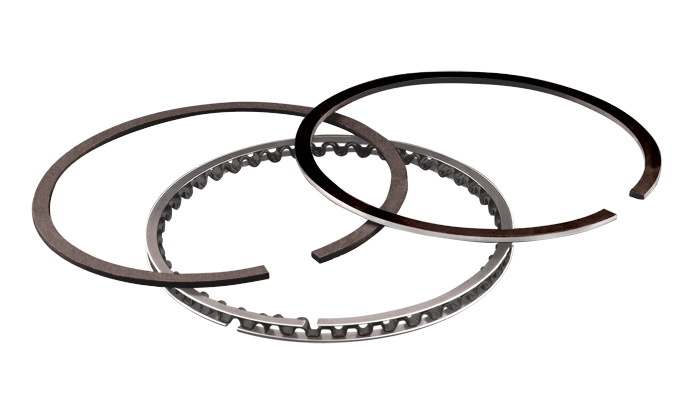 Choosing piston rings for a performance engine build is not as simple as it sounds. Your ring choices may be limited depending on the dimensions of the ring grooves that are available.
Choosing piston rings for a performance engine build is not as simple as it sounds. Your ring choices may be limited depending on the dimensions of the ring grooves that are available.
The location of the wrist pin may also limit what you can do with rod length and stroke if you want to build a stroker motor, and the thickness of the piston crown may limit how much metal can be safely removed to adjust deck height or compression.
To help you out with that engine build, here’s a few tips to consider when selecting a set of rings.
Popularity Contest: Popular ring sizes today include 1.5 mm, 1.2 mm and 1.1 mm (.043˝) top rings with 3.0 mm or even 2.0 mm three-piece oil rings. Some ring manufacturers even make 1.0 mm one-piece oil rings for some racing applications.
Napier-style second compression rings appear to be the most popular style today because they help scrape oil off the cylinder walls to improve oil control.
Cast Away: Cast iron rings are too brittle for high performance, high heat applications, so ductile iron or steel rings are usually a must.
Ring Treatment: Plasma-moly or black nitride coatings are the most popular surface treatments for rings. Those who prefer nitrided steel rings say they hold up in really high heat applications better than anything else.
Steel Gas-Nitrided: One ring manufacturer has introduced a line of all steel gas-nitrided rings for high horsepower, high rpm racing engines including nitrous-injected and alcohol blown engines.
The first and second compression rings are nitrided stainless steel, and the oil ring also has nitrided stainless steel rails and an expander.
All the rings also have a physical vapor deposition (PVD) coating of chromium nitride (CrN) on the face to reduce friction and wear.
Watch that Gap: Unless you are using “gapless” compression rings, the top ring end gaps usually need to be opened up a bit over stock dimensions to accommodate increased thermal expansion from higher combustion temperatures.
The higher the location of the top ring on the piston, the more end gap it usually needs to handle the heat.
Talking Tension: Thinner, low-tension rings reduce friction and are more conformable, so they can potentially add a little extra horsepower. The downside is they are also more expensive, and require pistons with shallower, narrower ring grooves.
One piston manufacturer told us they use “medium” tension rings with their pistons, with about 15 lbs. on the oil rings.
Another piston manufacturer said they recommend 12- to 15-lb. oil rings for racing, but like to see a little more ring tension in street applications – say 18- to 22-lbs. – for the oil rings.
Gas Vents: Pistons with vertical or lateral gas vents are available to help improve ring sealing, too.
The vents route combustion pressure against the ring to help seal it against the piston land and cylinder. Pistons with gas vents are primarily for high rpm racing engines, and should not be used on the street, because carbon buildup from idling can clog up the ports and cause uneven ring sealing.
Abrasive Behaviors: The reason why most rings fail is not because of detonation and breakage (though detonation can certainly damage rings). More often than not, rings fail as a result of abrasion destroying the ring surface. The abrasion comes from dirt and debris left inside the engine by the rebuilder (the most common cause according to one ring manufacturer), by airborne abrasives and contaminated lubricants (poor air filtration or air leaks into the crankcase) and by poor-quality cylinder finishes. n














